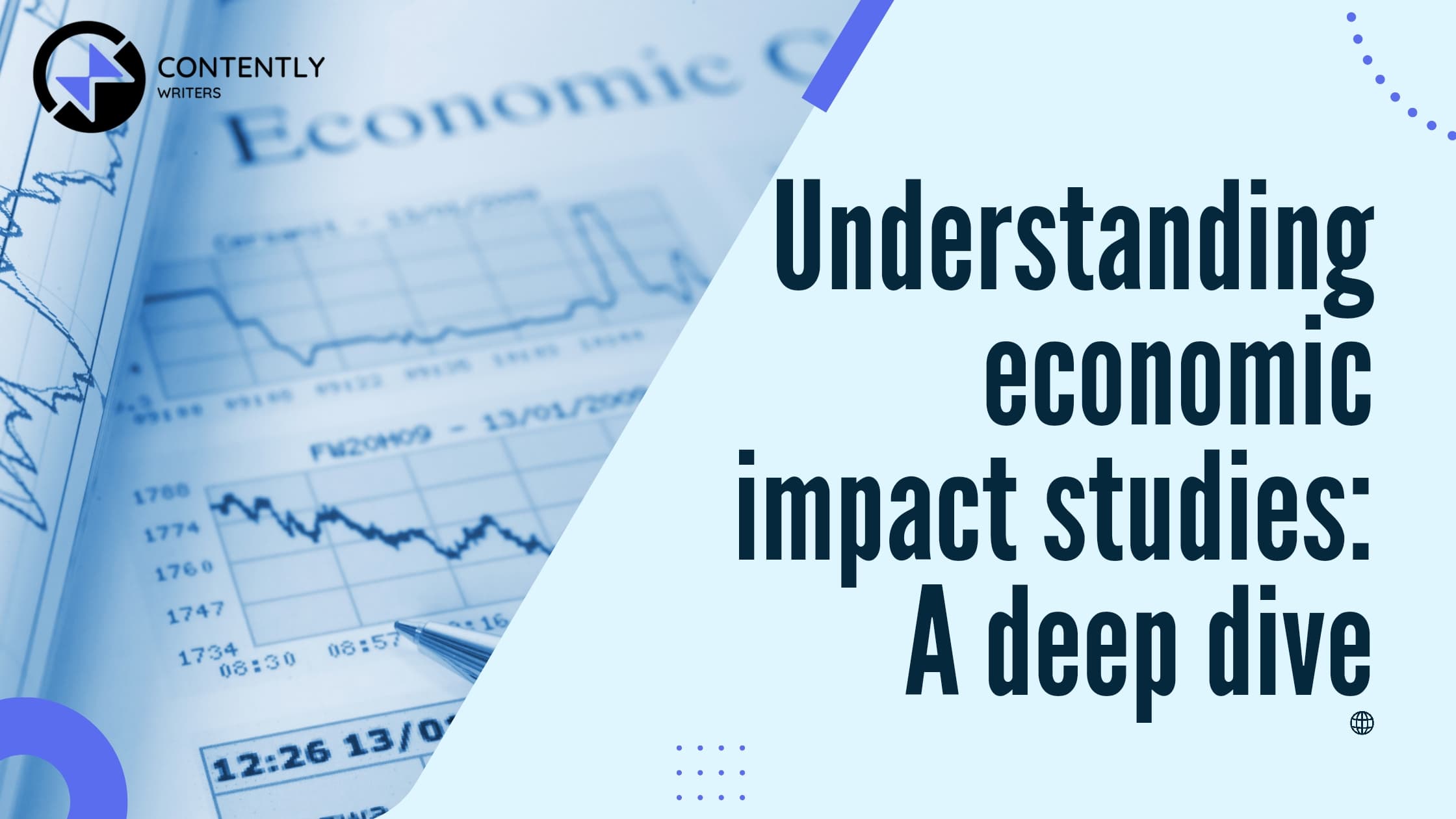
Understanding Economic Impact Studies: A Deep Dive

Economic impact studies are essential tools that enable governments, businesses, and organizations to assess the financial and economic consequences of specific events, programs, or policies. By analyzing factors like job creation, GDP growth, tax revenue, and sector development, these studies help determine how particular activities affect the economy overall.
From hosting major events like the Olympics to launching new infrastructure projects or introducing policy changes, economic impact studies provide structured, insightful analyses that guide important decision-making. Assignment experts play a crucial role in delivering well-structured and accurate studies, helping organizations make informed choices based on reliable data.
In this blog, we’ll explore the financial implications of economic impact studies, why they are important, the main methodologies used, and real-world examples from across the globe.
Why Are Economic Impact Studies Important?
Economic impact studies offer several essential benefits, including:
- 1. Supporting Decision-Making: Decision-makers and investors rely on economic impact studies to determine whether a project is worth pursuing. By assessing potential return on investment (ROI), these studies help prioritize projects with the highest benefits.
- 2. Justifying Funding: Governments with limited resources can use economic impact studies to justify public spending. These studies highlight the potential advantages of projects, such as improvements to infrastructure and public services.
- 3. Mitigating Risks: These studies identify possible risks and adverse effects, allowing stakeholders to address challenges proactively. For example, if a study reveals that jobs may be lost in certain sectors, policies can be implemented to counterbalance the impact
- 4. Ensuring Public Accountability: Economic impact studies inform taxpayers and voters, promoting transparency and ensuring that public resources are allocated effectively.
Key Components of Economic Impact Studies
Economic impact studies usually evaluate three types of impacts:
- 1. Direct Impacts: These are the immediate economic contributions of a project or event, such as the jobs created by a new construction or the spending generated by visitors. For instance, building a new sports stadium directly creates jobs for construction workers, engineers, and other professionals.
- 2. Indirect Impacts: These impacts result from secondary economic activities triggered by the project. For example, a new manufacturing plant might lead to local suppliers hiring more workers, creating a ripple effect throughout the economy.
- 3. Induced Impacts: These impacts reflect the economic benefits when project-related workers spend their earnings within the local economy, boosting demand for housing, retail, dining, and other services.
Key Methodologies Used in Economic Impact Studies
Depending on the scope and nature of the project or event, several methods can be used to conduct an economic impact analysis:
- 1. Input-Output (I-O) Analysis: A widely-used method, I-O analysis examines relationships between economic sectors, revealing how changes in one industry (e.g., manufacturing) affect others (e.g., supply chains or retail).
- 2. Cost-Benefit Analysis (CBA): CBA is used to assess whether a project's benefits outweigh its costs. It helps decision-makers evaluate the long-term financial and social returns on investment
- 3. Computable General Equilibrium (CGE) Modeling: CGE models simulate how an economy reacts to external changes, showing complex interactions between economic sectors and factors. They provide a comprehensive view of long-term impacts.
- 4. Economic Base Theory: This theory distinguishes between “basic” and “non-basic” sectors. Basic sectors (like manufacturing and tourism) generate income for a region, while non-basic sectors (like retail and healthcare) primarily support local demand. This method helps evaluate a project’s contribution to the regional economic base.
Real-World Examples of Economic Impact Studies
Here are a few notable examples where economic impact studies have been applied:
- 1. Olympics: Cities bidding to host the Olympics often conduct economic impact studies to assess the short-term benefits of tourism and global attention. However, studies sometimes reveal that large infrastructure investments do not always yield sustainable long-term gains
- 2. Natural Disasters: Following natural disasters like Hurricane Katrina, economic impact studies are used to assess damages and recovery costs. These studies evaluate impacts such as job losses, infrastructure damage, and long-term economic effects on the local economy
- 3. Public Infrastructure Projects: Major infrastructure projects like high-speed rail or airports often use economic impact studies to assess job creation, regional connectivity, and environmental benefits. For instance, California’s high-speed rail project utilized an economic impact study to analyze its potential effects on job creation and sustainability.
- 4. Policy Changes: Economic impact studies predict policy change's outcomes, such as increasing the minimum wage or adjusting tax rates. These studies help evaluate potential effects on employment, consumer spending, and business performance.
Limitations of Economic Impact Studies
While economic impact studies provide valuable insights, they do have limitations:
- 1. Overestimation of Benefits: Some studies may overestimate benefits, especially if they assume highly optimistic economic projections for factors like demand and job growth.
- 2. Overlooking Externalities: Certain studies may fail to account for negative externalities, such as environmental damage, displacement of local communities, or long-term maintenance costs
- 3. Short-Term Focus: Many studies emphasize short-term impacts, leading to underestimating long-term economic outcomes.
Conclusion
Economic impact studies are essential for understanding how significant projects, policies, or events affect local, regional, or national economies. By evaluating direct, indirect, and induced impacts, these studies provide insights that help guide decisions, allocate resources wisely, and ensure transparency and accountability.
Whether you’re a policymaker, business leader, or engaged citizen, understanding the economic impacts of large-scale projects is key to ensuring that investments deliver value and contribute positively to society